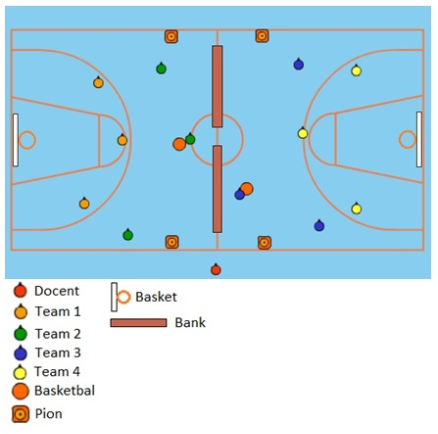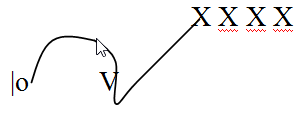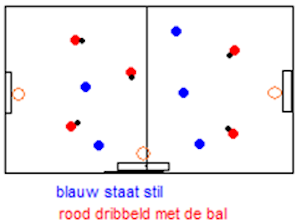Basketball drills for technique dribbling
- Circle the ball alternately around: hips, thighs, knees, calves, ankles, chest, head.
- Foot Stride; circle the ball first around the different parts of the front leg, then the back leg.
- Spreading stance; same as previous exercise.
- As previous exercise. After each circle alternate with the other leg.
- Eight circle.
- Alternate between squatting and standing while dribbling.
- Dribble while sitting down and standing up again.
- Dribble while lying on your back; stand up while dribbling at the signal.
- Dribble while lying down and standing up again.
- Everyone has a ball stands on the sideline.
- Exercises are alternated with
- crossover,
- between the legs
- etc.
- The teacher divides the room into two squares by placing benches on the centerline of the room.
- Then the teacher makes 2 squares with pawns to catch up the right of attack.
- During this game the rulebook is used.
- See module basketball for this guide.
- The teacher divides the students into teams of 3, possibly with a substitute.
- See the tables at the bottom of the lesson preparation for the game schedules.
- The intention is that the team that has the ball (on the map team 2 & 3) try to score.
- To be able to score, the team must first get the right of attack.
- They get this right of attack when they arrive with the ball in the area of the pawns.
- From now on the team may score.
- They do this by shooting the ball into the basket.
- The other team must try to take the ball away from them.
- When this happens, the teams swap roles and the new team with the ball has to get the right of attack and try to score.

- We're gonna dribble!
- Dribble the ball from left to right.
- With feints in between. High. Low. Fast and slow.
- Look closely at the options you have.
- The planet Saturn is the planet with the rings.
- So can you guess how the Saturn exercise goes?
- Spin the ball around your left leg, your right leg and around both legs.
- There is no dribbling involved, but this exercise is very good for your hand-eye coordination.
- The players bounce the ball on the spot.
- Make sure the hand is always on the ball so the ball is pushed down (so not hit down).
- The players sink through their knees so they are low to the ground and the ball bounces faster.
- Then the players stretch their knees again. Repeat several times.
- The players dribble through each other, changing direction all the time so that they are criss-crossing each other.
- The players must try not to touch each other.
- The players try to guide the ball along a route whilst dribbling.
- For example slalom around cones or over benches (at your own discretion).
- Place a row of cones and give each child its own basketball.
- The children are challenged to dribble around the cones.
- They are not allowed to hit the cones and they are not allowed to lose their ball.
- The children follow each other quietly. The pace is gradually increased.
- When the children get more ball control, put another row of cones parallel to the first row.
- Let the children play a game: the first one who manages to dribble around the cones without a fault has won.
- Let the winners play against each other, until only one winner remains.
- A good basketball exercise for more ball control.
Feint exercise
- Walk towards the defender, move your left foot to the left, as if you were passing the defender on the left
- Immediately afterwards, move your left foot to the right and get the ball very low from your left hand to your right hand, so that your back is facing your opponent
- Now dribble on and score with the lay-up

- Half of the basketball players have a ball.
- These basketball players dribble all over the room.
- On the whistle they pass the ball to someone they first made eye contact with.
- The pass they use to do so is up to them.
- Choose the pass that is best in the situation.
- If you are close to the ball, do not pass.

Try to hit as far as possible without error or loss of ball.
- Players stand in pairs (about the same size).
- On the whistle, the player with the ball dribbles to the opposite side while the player without the ball can do heavy defence.
- There may be physical pressure but no mistakes.
- Players stop when they have lost control of the ball or when the defence has taken it away.
- If the player with the ball touches the opposite side, he may dribble again in the next round but against a different defence.
- Divide the players into 2 groups.
- Set up a track on both sides of the court where the players have to dribble in between.
- At the end of the course they can finish on goal.







